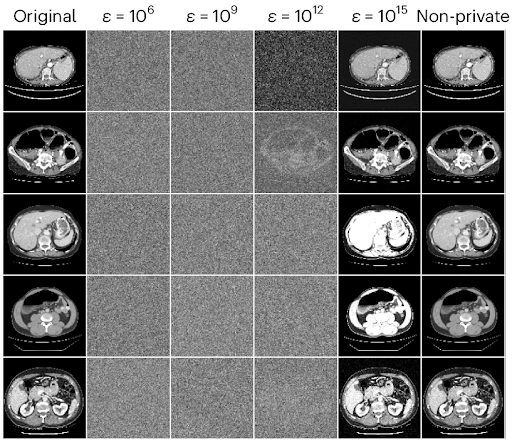Medical practice administrators, owners, and IT managers across the United States are challenged to balance effective revenue collection with maintaining patient satisfaction and trust.
One effective way to improve this balance is through transparent and flexible financial solutions that address patient needs with clarity and compassion.
This article discusses evidence-based strategies to help healthcare organizations build trust with their patients by improving financial communication and providing adaptable payment options.
By reviewing industry research and practical examples, it highlights how adopting modern technology and patient-centered approaches can improve the patient financial experience, reduce collection challenges, and support the financial health of both patients and providers.
The Challenges in Patient Financial Experiences
More than 40% of American adults report medical debt, and nearly half find healthcare costs difficult to afford.
Many patients delay or skip necessary care because they worry about how much the medical bills will be.
One big problem is the complicated and confusing billing system patients must handle, especially when dealing with insurance deductibles and out-of-pocket payments.
Health insurance deductibles reset each year, sometimes meaning patients must pay thousands of dollars before insurance covers costs again.
For people and families with high deductible health plans (HDHPs), these amounts can be around $1,300 for individuals and $2,750 for families at the lowest.
When you add copays and coinsurance, out-of-pocket expenses often reach between $3,000 and $5,000.
This money burden can confuse patients and make them lose trust in the healthcare system.
To fix this, healthcare providers need to focus on clear information, honesty, and payment options that fit each patient’s situation.
Clear financial practices help reduce frustration and confusion, while flexible payment plans make it easier for patients to get care, improve collections, and build good relationships over time.
Transparency in Billing: A Foundation for Trust
Clear billing practices are very important to help patients trust their healthcare providers.
When patients get clear, itemized bills with upfront cost explanations, they understand what they owe better.
This kind of clarity lowers the chance of surprise bills and mistakes that break trust.
Research shows that nearly 80% of medical bills contain errors, often due to complicated or wrong coding or patient information.
About 35% of denied insurance claims come from incorrect patient details. This costs hospitals a lot—over $2.5 million a year on average—and adds up to more than $6.7 billion lost across the U.S. healthcare system each year.
These mistakes cause payment delays and make patients unhappy.
Healthcare providers can reduce these problems by using standard methods for collecting patient information, checking insurance eligibility right away, and keeping accurate patient records.
Training front office staff well about insurance details helps too.
Patients say that clear coordination between their healthcare providers and insurance companies is very important.
Studies find that 96% of patients value this as part of their billing experience.
Knowing clearly how deductibles and out-of-pocket maximums affect bills helps patients pay on time. About 43% of patients say they would pay faster if charges were explained well.
Online patient portals that show detailed bills, payment history, and insurance information are helpful too.
These portals improve communication, let patients check bills on their own, and reduce the work on staff.
Flexible Payment Plans to Reduce Financial Stress
Payment options that fit each patient’s situation are important to lower financial stress from healthcare costs.
Patients with big bills need ways to pay over time without extra interest or pressure.
Offering zero-interest plans or payments based on income helps patients manage costs responsibly, which improves satisfaction and helps providers collect money.
Some health systems that used flexible payment plans saw better patient involvement and higher collections.
For example, a group of seven hospitals worked with CarePayment to set up zero-interest plans. This led to more patients joining, better self-pay results, and improved satisfaction.
Custom payment plans can also include charity care or sliding scale fees based on how much patients earn.
Clear details and easy-to-understand financial help information should be available so patients do not get confused.
Compassionate Communication for Financial Matters
Healthcare providers who talk kindly and clearly about money help patients feel better about paying.
Patients who have money troubles often feel worried or embarrassed, which can make it hard to solve payment problems.
Hospitals that use personal and clear communication often get better payment results and keep good patient relationships.
Grinnell Regional Medical Center in Iowa used kind debt collection methods. They offered many payment choices, followed up personally, and understood patients’ money problems.
This led to better patient happiness and more payments.
Teaching patients about insurance, billing, and help programs reduces confusion and fights arguments.
Financial counseling should be part of patient care, even before treatments, so patients can make informed decisions.
The Impact of Health Insurance Deductible Resets
Every January, health insurance deductibles reset. This happens each year and causes problems.
Patients have to pay the deductible again, so they might delay care because of high upfront costs.
This mostly affects patients with HDHPs who must pay thousands before insurance helps.
Billing systems that explain these resets can help patients plan their money better.
Providers who talk about this early and offer flexible payments stop patients from delaying or skipping care.
Healthcare groups also suggest using Health Savings Accounts (HSAs) where patients save money before taxes for medical costs.
Teaching patients more about insurance lowers mistakes and wrong beliefs about costs and coverage.
Technology and Automation in Optimizing Financial Workflows: The Role of AI
Artificial intelligence (AI) and automation have become important tools to make financial work easier for healthcare offices.
These tools make processes faster, more accurate, and improve patient engagement for a smoother financial experience.
AI-Powered Patient Communication and Payment Assistance
Simbo AI shows how AI helps automate front-office tasks like phone service.
This AI answers patient questions about bills, insurance, and payments quickly and reliably without adding more work for staff.
This makes patients happier and helps providers collect money better.
AI chatbots and automatic messages can remind patients to pay, check insurance eligibility, and help set up payment plans.
By sending messages based on each patient’s preference, these tools reduce missed payments and unanswered calls.
Enhanced Accuracy through AI in Billing and Coding
AI tools that help with coding lower human mistakes in billing and claims.
Since up to 80% of bills have errors, these AI systems read CPT and ICD codes quickly and correctly, which prevents claim denials and delays.
AI also checks patient information at intake, reducing mistakes in details and insurance info.
This leads to fewer rejected claims and saves providers millions of dollars.
Explainable AI for Trustworthy Systems
Explainable AI means the staff understands how AI makes decisions.
Though this is mostly for clinical uses, clear AI use in billing also helps staff trust the payment process.
Companies like Simbo AI use explainable AI to keep systems honest and reliable.
Good checks and reports on AI results help staff and patients feel confident.
Improving Financial Literacy and Transparency through Digital Tools
Digital portals with AI can give patients cost estimates before care, show up-to-date bills, and explain insurance benefits.
These tools help reduce confusion and offer payment plans based on the patient’s financial situation.
Patient portals and mobile apps make it easy to pay with one click and offer flexible payment options like installments or delayed payments if patients qualify.
Regulatory Landscape and Industry Trends Affecting Financial Transparency
The healthcare industry must follow changing rules designed to protect patients from surprise medical bills and improve clarity.
The No Surprises Act makes providers and insurers settle billing problems without involving patients. It limits out-of-network costs to in-network rates during emergencies or in-network treatments.
Federal rules ask hospitals to share prices for common procedures and provide upfront cost estimates.
These rules help patients plan healthcare costs better and encourage competitive pricing.
Changes to Medicare and Medicaid focus on controlling costs, preventing illness, and negotiating drug prices. These changes affect what patients pay and require healthcare providers to update billing and counseling processes.
Proven Outcomes of Transparent and Flexible Financial Solutions
Some healthcare groups have shown success using patient-focused financial strategies.
Carilion Clinic in Virginia worked with R1 to create Carilion Bill Pay, a system linked to their electronic health records.
This gave patients one place to see all billing and insurance information, making it easier to manage household bills.
Since it started in January 2020, over 109,000 patients signed up—more than six times the estimate.
Patients using this system paid back 60% more on each dollar owed compared to those using old payment methods.
Carilion’s score measuring patient satisfaction steadily rose, almost reaching a top industry level of 40 points.
These examples show that clear, flexible, tech-based solutions can improve patient satisfaction and financial results.
Recommendations for Medical Practice Administrators, Owners, and IT Managers
- Make sure patient information is accurate and complete during intake. Train staff and use real-time insurance checks to reduce billing mistakes and denied claims.
- Use clear billing systems that give itemized bills, easy-to-understand charge explanations, and simple access to payment and insurance info through patient portals.
- Offer flexible payment plans fit for different patient financial needs, including zero-interest options and charity care, to lower barriers to care and improve collections.
- Train staff to speak kindly and clearly about money matters, helping patients understand bills and payment choices.
- Use AI and automation tools like Simbo AI’s phone services to improve patient communication, remind patients about payments, and provide self-service options.
- Keep up with healthcare laws and rules to meet transparency requirements like the No Surprises Act, and use cost estimate tools when talking to patients.
- Teach patients about health insurance and financial help, suggest using Health Savings Accounts (HSAs), and set clear expectations about payments.
By focusing on honest communication, kind conversations, and payment choices supported by current technology, healthcare providers can build patient trust and improve money management.
For medical practices in the United States, these methods provide a practical way to handle growing patient money concerns and make the healthcare experience better overall.
Frequently Asked Questions
What prompted Carilion Clinic to improve their patient financial experience?
Carilion Clinic recognized the increasing financial responsibilities faced by patients and aimed to create a billing experience that treats them with financial compassion, addressing their needs with flexibility.
What is the mission of Carilion Clinic regarding patient care?
Carilion Clinic’s mission is to improve the health of the communities they serve, encompassing not just physical and mental wellbeing, but also financial health.
How did Carilion Clinic approach the integration of technology in patient billing?
Carilion partnered with R1 to launch Carilion Bill Pay, believing that a technology solution would enhance long-term patient relationships and improve the financial experience from the patient’s perspective.
What features does the R1 Patient Bill Pay platform provide?
The platform connects payment options and insurance information, allowing patients to view and manage household bills easily, with detailed breakdowns and personalized payment options.
What outcomes did Carilion Clinic achieve after implementing the new billing system?
Carilion surpassed its patient payment goals, increased digital engagement, and improved patient satisfaction, with a net promoter score nearing 40 points.
How has patient enrollment in Carilion Bill Pay progressed?
Since its launch in January 2020, over 109,000 patients have registered for Carilion Bill Pay, exceeding the clinic’s original goals significantly.
What payment behavior changes were observed in enrolled patients?
Patients enrolled in Carilion Bill Pay repaid 60% more of every dollar owed compared to those using traditional payment methods.
What automation features did R1’s Patient Bill Pay introduce?
The platform automates communications based on patient preferences, offering consistent, compliant financial solutions tailored to individual circumstances.
How does Carilion Clinic foster patient trust regarding financial matters?
Patients have more control over their financial relationship with Carilion, and they trust the health system to provide solutions that cater to their needs.
In what ways did Carilion Clinic enhance patient satisfaction with the new system?
Carilion Clinic provided transparency and flexibility in billing, leading to increased patient satisfaction and engagement through technology-enabled solutions.
The post Strategies for Building Trust with Patients Through Transparent and Flexible Financial Solutions in Healthcare first appeared on Simbo AI – Blogs.











